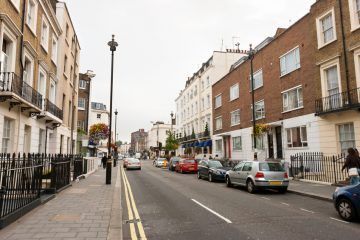10 Things to Keep in Mind if You’re Buying in London Post-Brexit
If you thinking of buying a property in London post-Brexit, the Regional Director of Portico London estate agent, Mark Lawrinson, has ten things to keep in mind to make a sound property investment:
Look out for big infrastructure projects
Even in a weak or unstable market, locations undergoing large infrastructure investment are likely to still experience growth in both rental yields and capital gains. Landlords should look to areas being transformed along both the Night Tube and Crossrail lines to identify long-term investment prospects. For example, Forest Gate, Farringdon and Whitechapel are areas set for regeneration and a rise in property prices thanks to the Crossrail service.
Check out the high street
The high street is a great indicator of the demographic of an area and shows whether the area is in decline or has growth potential. Some of the factors you should look at are: Have there been many changes recently? Are shops closing down with no sign of opening, or are they closing with new names moving in? Is the council spending money to smarten it up?
Find good schools

10 Things to Keep in Mind if You’re Buying in London Post-Brexit
Another great way to judge the prospects of an area is the schools in the vicinity. While you may not want to rent to tenants with children, the London population is growing fast, and good schools are becoming more difficult to come by. Therefore, having a good school in the area is a big bonus. People both rent and buy in these catchments to get their children into a good school, which gives you a good return on investment.
Look for a home
If you are buying a property to live in, remember that it’s a home first and investment second. If you plan to live in the property long-term, you should be shielded from bumps in the market. As the London property market has proved itself to be resilient, what happens in the next two years could be completely insignificant if you are there for ten.
Shop around for mortgages
To make a successful investment decision, you should use a broker who has access to the entire market. Be aware that some brokers operate on a panel, which means that when they say they’re getting you the best deal, they are only getting you the best deal from their panel. With lending criteria changing daily, it is advised that you shop around. This is true even for landlords who’ve used the same lender or broker for years.
Choose a good solicitor
If you choose a cheap solicitor, they may end up costing you more. Buying a property is one of the single biggest purchases of your life, so getting the right advice is crucial. With a market that’s changing daily, avoiding delays with the right legal aid could be the difference between completing the transaction or missing out.
Pick the right estate agent
In a tough market, it is more important than ever to pick a local estate agent who knows the area inside out and who will get you the best result as a buyer and a seller. An agent who just instructs and advertises your property and waits for the calls will struggle in a difficult market. A proactive agent who knows their buyers can match the right person to your property, and uses past experience to price your home right. With a no-sale, no-fee policy, high street estate agents now have as much a vested interest in the transactions as the vendor and buyer.
Create a two-year and five-year plan
Most investors would take a two-year fixed rate mortgage, but with lending criteria getting tougher for landlords, some of the better deals in terms of loan-to-value (LTV) can be found at a five-year fixed rate deal. No one knows what will happen to the property market over the next two years, so you must plan for what will happen if circumstances go out of your control.
Add value to your property
From basic redecoration to new kitchens and even structural work, such as loft extensions, adding value to your property will make your home a better investment. If you’re looking for capital growth, not market-dependent, then you must look at innovative ways to add value to your property.
Be clear on your requirements
We all know what we’re looking for in a property, even those seeking investments, but you must remember to be realistic with your actual needs. Always compromise where necessary to make your search much easier.










